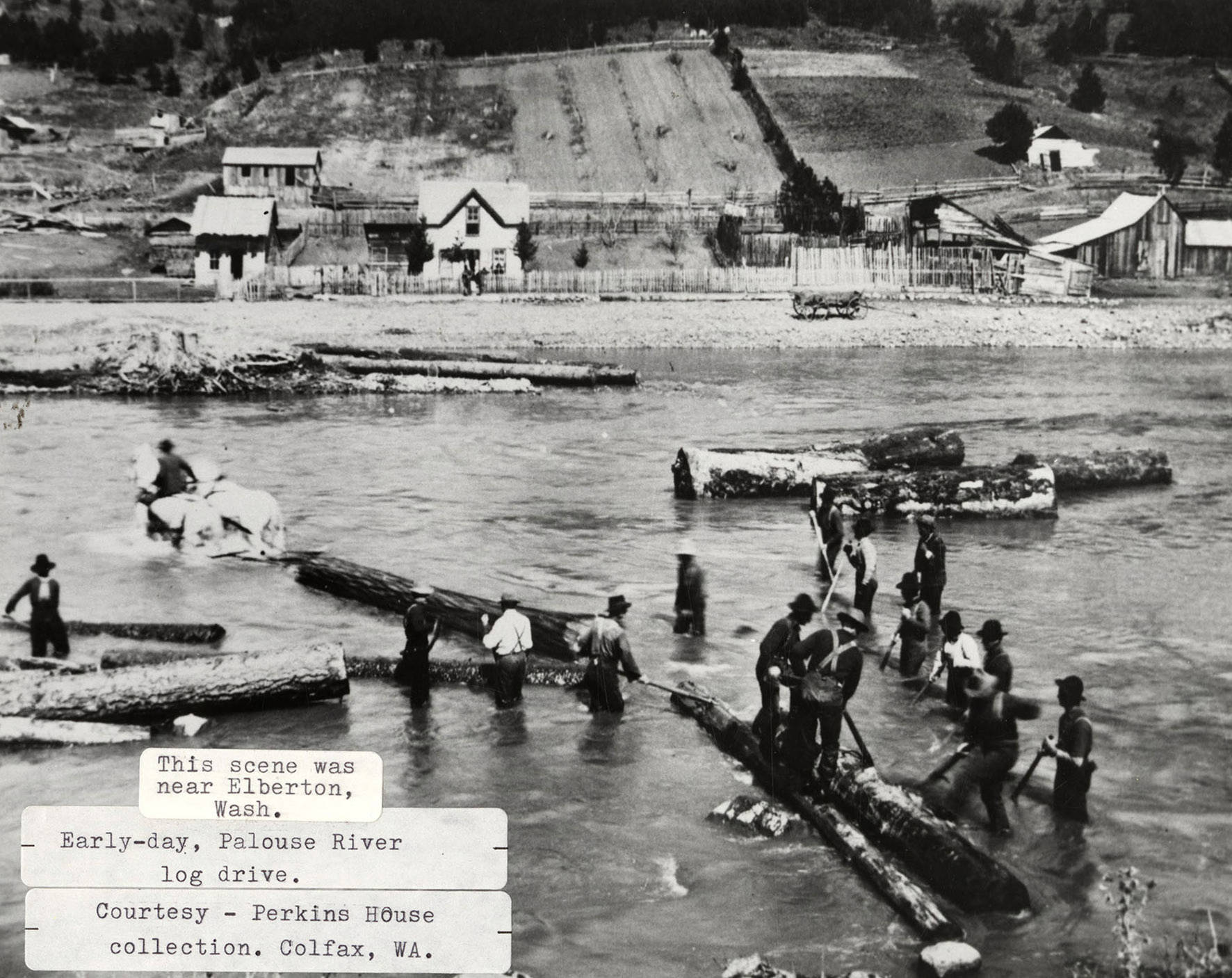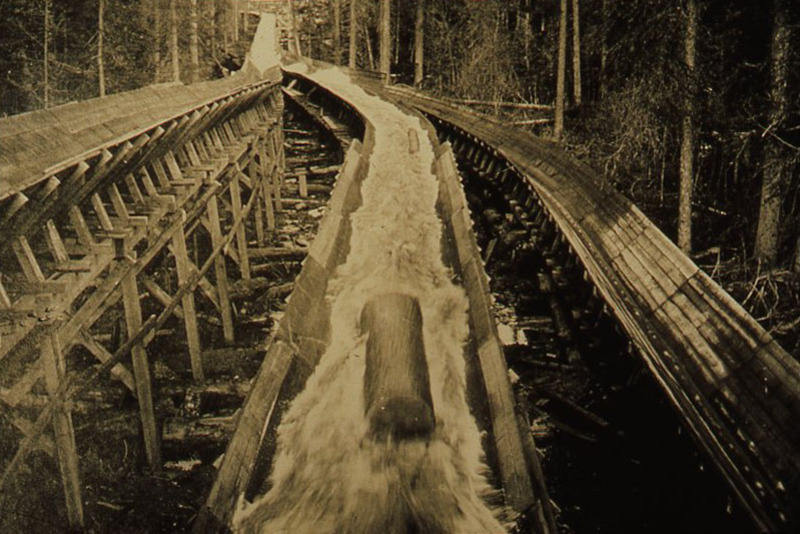Last week, we learned about tractors as a form of transporting logs from the forest to the railroad track or water formation (such as a river or flume). Once the logs have been transported to the railroad track or water formation, a few options remain for getting them to the mill.
Logs were often transported to the mill by using the already-existing forces of nature. Allowing logs to flow down a river freely or through the controlled use of low-powered boats was an easy and cost-effective way to transport high quantities of very heavy materials. Boats would simply float downstream with their logs, or logs would float freely.
However, log were also transported using constructed flumes. Flumes were primarily used when transporting logs ”down mountainous terrain to a sawmill.”1 Although they look cool and were the inspiration to log flume rides at theme parks, early log flumes were ”prone to jams that could cause damage and required constant maintenance,” making them less than ideal for transporting logs long distance down a mountain.2 Log flumes were first used commercially in the mid 1800s when James W. Haines built the first ”V” shaped flume in 1868 that ”allowed jammed logs to free itself (when the rising water level in the flume would push up the log. These flumes consisted of 2 boards, 2 feet wide, joined perpendicularly, and came in common use in the western United States during the late 19th century.”[^3]
Flume herders were men who, despite the dangers, “would ride down the flume in small crafts or boats, either for inspection or for thrills. Such rides were the precursor of the modern log-ride amusement park rides.”1
Sources
Photos courtesy of the Potlatch Historical Society Collection





